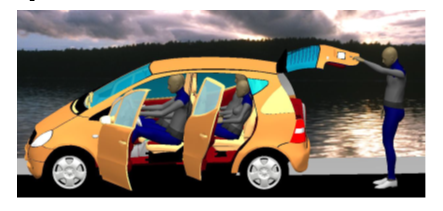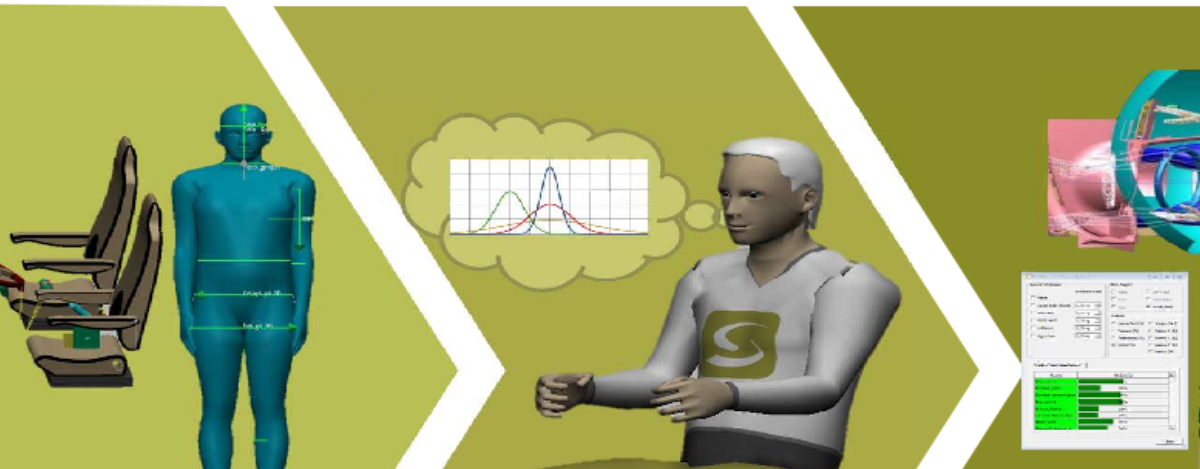The Automotive Industry is witnessing a transformation globally as well as in India. New technologies and government regulations are driving this transformation. More so, the Indian customers and their expectations from an automobile is changing notwithstanding the onslaught of shared and hired mobility service providers. It is imperative that Indian Automotive Industry takes cognizant of this and many of them already are. The consumer seeks a delightful experience from driving an automotive – be it shared or hired. The mileage and quality aspects are taken for granted while making a buying decision today.
Ergonomics is one of the areas which can bring a lot of experiential delight as well as adherence to safety norms. As norms become stringent and consumer preferences change to more personalization and comfort, many Automotive companies and component manufacturers are beginning to ensure that the products they manufacture are suited for the Indian demography. It is also important that they have the necessary technology platforms to do this. This article sums up the importance of Ergonomics and how Automotive Manufacturers can leverage technology platforms to ensure its compliance not only for the Indian market but also for the global market.
What is Automotive Ergonomics and its importance to the Indian Automotive Industry?
Ergonomics is the science that applies theories, principles, data and methods  to product design, with the goal to optimize user comfort, health and safety, as well as overall system performance. Automotive ergonomics is the study of how an automotive can be designed better for human use.
to product design, with the goal to optimize user comfort, health and safety, as well as overall system performance. Automotive ergonomics is the study of how an automotive can be designed better for human use.
India is a strong and emerging market for automotive companies. It is also becoming a hub for global R&D as well as manufacturing. The automotive industry is very mature in terms of adoption of Digital Product Design and Validation. With this background, extending product design to Occupant Ergonomics is very easy with right technologies at your disposal.
Ergonomics Simulation – Doing it digitally
EDS Technologies in partnership with Human Solutions has offered technology platforms to many Indian Automotive companies for ergonomics simulation. Using 3D body scanners from Human Solutions, ARAI has created the first comprehensive database for the Indian population which can be utilized by Automotive companies.
RAMSIS is the de-facto standard worldwide in Automotive Industry in Occupant Ergonomics Simulation for interior vehicle design. RAMSIS was developed by Human Solutions and a consortium consisting of all German car manufacturers and two seat manufacturers in the 1980s. Today, more than 70% of the world’s car manufacturers use RAMSIS. Development of RAMSIS is still heavily supported by the German consortium and new developments and functions are in most cases based on input from automotive customers.
 The use of RAMSIS in the design process increases the ergonomics quality of products and makes ergonomics an integral part of the design process. It allows manufacturers to put the end-user in the center of the development process and build the product that will offer a safe and comfortable environment to the targeted end-user population. From the earliest stage of the design process, until the final layout of the instrument panel, RAMSIS provides the methods, data and information to make well-founded, optimal design decisions from an ergonomic point of view.
The use of RAMSIS in the design process increases the ergonomics quality of products and makes ergonomics an integral part of the design process. It allows manufacturers to put the end-user in the center of the development process and build the product that will offer a safe and comfortable environment to the targeted end-user population. From the earliest stage of the design process, until the final layout of the instrument panel, RAMSIS provides the methods, data and information to make well-founded, optimal design decisions from an ergonomic point of view.
Instant Ergonomics in practice with software:

Automotive companies have realized the following benefits from RAMSIS in terms of
ergonomics and efficiency:
- Faster time-to-market thanks to savings on time-consuming trial runs with test persons
- Reduction in development costs of more than 50%
- Detailed Statistical Knowledge about body dimensions and about ingress and egress
- Realistic Predictions about future space and operation conditions inside a vehicle
- Compliance with standards and ensuring of ergonomic quality such as the best accessibility and usability of all controls
- Faster, enhanced product maturity and cost savings through the avoidance of planning errors
- Virtual, International test collective to represent human size differences
- Comparison of various vehicle concepts with the same test collective
- Simulation of driver’s posture and motion behavior based on modern research
- Effective integration into your product development process
- Competitive advantages thanks to high level of comfort and safety
Traditionally, automobiles manufacturers from Europe, North America, South Korea or Japan were sold as it is or homologated with very little change from ergonomics perspective. Indian based OEMs also were also more focused on mileage. India has a very different demography when compared to these countries. It is important that products are designed and manufactured for Indian demography when the indented users are Indians.
